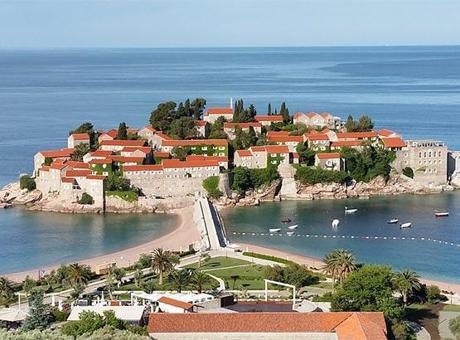French Startup Aims to Make Fuel Out of Thin Air

As transportation sectors like shipping and aviation remain difficult to decarbonize, a French startup claims to have developed a promising solution to reduce carbon emissions in these industries. Aerleum, founded in 2023, says its technology can pull carbon dioxide from the air and convert it into methanol, which can be used to fuel cargo ships and serve as a base chemical in producing aviation fuel.
The French utility company Électricité de France recently awared Aerleum the EDF Pulse Award in the carbon capture category for this innovation, which may help offset some of the emissions from transportation sectors that depend on liquid fuels. Since 2019, EDF’s innovation accelerator, Blue Lab, has presented the awards to highlight the efforts of start-ups, innovators and entrepreneurs with new ideas that could move the energy sector towards net-zero carbon emissions.
Aerleum’s proprietary reactor, which combines CO2 capture and conversion in a single device, uses a sponge-like material that can adsorb CO2 concentrations as high as 15 percent, making it effective for both direct air capture and point source carbon capture, in which CO2 is captured directly from industrial exhausts. In direct air capture, CO2 makes up roughly 0.04 percent of the gas being filtered; for point source capture; that rises to 10 percent for something like a natural gas power plant smokestack. Aerleum’s founders say their system could be a good complement to such industrial facilities by filtering and converting CO2 out of the exhaust before it reaches the atmosphere.
Aerleum CEO Sebastien Fiedorow says that it takes about one hour for the proprietary sponge-like material the company developed to pull in as much carbon dioxide as it can hold. “The second stage, the conversion to methanol, is completed in about 20 minutes,” says Fiedorow. After that, the reactor begins another cycle of adsorbing CO2 from the air. How much CO2 is captured and how much methanol is produced, says Fiedorow, will depend on the size of the reactor.
“Carbon capture is costly,” says David Sholl, the director of the Transformational Decarbonization Initiative at Oak Ridge National Laboratory in Tennesse. “Because you’re trying to either mitigate or offset some emission, the ultimate economic question is how much will people pay to do this.” Oak Ridge employs a liquid solvent for CO2 absorption in a 3D-printed carbon capture device they developed to perform direct air capture. Whether the mechanism is a sponge like Aerleum or a solvent like Oak Ridge, the question of cost remains.
Aerleum’s approach addresses the top economic challenges facing carbon capture and conversion. Sholl points out that converting CO2 economically is tough. CO2 is chemically nonreactive, making conversion both complex and expensive. But Aerleum says its reactor relies on a simplified process that eliminates energy-intensive steps that would keep the cost prohibitive.
Making Money by Making Methanol
There will surely be a market for all the methanol Aerleum plans to produce. According to the National Renewable Energy Lab in Golden, Colo., the U.S. government has set ambitious targets for sustainable aviation fuel production, with a goal to produce all aviation fuel from renewable sources by 2050. Sholl says achieving this would require the production of tens of billions of liters of sustainable aviation fuel each year. Scaling up to that amount in 25 years “is possible,” he says. Aerleum CEO Sebastien Fiedorow says Aerleum’s technology will play a big role in reaching that goal.
Currently, most methanol is derived from fossil fuels like natural gas, with CO2 being a climate-changing byproduct. Aerleum’s renewable “E-methanol” process could help reduce or offset these emissions in addition to mitigating the CO2 output from other industrial processes.
“Because you’re trying to either mitigate or offset some emission, the ultimate economic question is how much will people pay to do this.” –David Sholl, Oak Ridge National Laboratory
The major challenge that Aerleum must solve is that methanol created from thin air is more costly than conventional, fossil-fuel-based methanol. According to a recent report from IDTechEx, a market research firm that specializes in emerging technologies, sustainable aviation fuel is currently 10 times as expensive as conventional jet fuel.
Aerleum says it is working to improve its fuel’s cost-competitiveness through economies of scale and the use of green hydrogen generated using renewable sources such as solar and wind. Its cost-cutting measures will also be aided by incentives from national governments in the form of tax credits and aviation fuel production credits, like the ones the United States currently offers under the Inflation Reduction Act.
Others are betting that Aerleum can ramp up production, reach cost parity, and eventually turn a profit. Venture capital firms 360 Capital and High-Tech Gründerfonds have invested huge sums because of their belief that Aerleum has a winning formula.
Aerleum is making an early entry to an industry that Oak Ridge’s Sholl says will have total annual revenues approaching US $100 billion if carbon capture-and-conversion targets are met. The startup announced in October that it had raised $6 million to finance the construction of a pilot-stage facility as it proceeds toward full industrialization. The output of the pilot-stage plant will be as much as 3 tonnes of methanol per month or roughly 3,800 liters.
According to Fiedorow, once Aerleum overcomes the engineering challenges inherent in scaling up from the lab to the pilot stage, the startup will be on track for full industrialization of its capture-and-conversion process. He says another of the company’s goals is to build a first-of-its-kind factory whose output will be about 300,000 tonnes of methanol—which equates to just under 380 million liters—per year by 2030. From there, he says, Aerleum will likely rely on licensing its technology to giant industrial firms like oil and gas companies which can afford to build Aerleum-style reactors at their facilities to meet their greenhouse gas emission curtailment goals.
Aerleum joins other innovators in carbon capture who are trying to make it scalable and affordable. Earlier this year, Climeworks, a Zurich-based startup, introduced new direct air capture technology designed to remove millions of tonnes of CO2 annually by the end of the decade. According to projections from the Intergovernmental Panel on Climate Change, the world may need to capture between 6 billion and 16 billion tonnes of CO2 annually by 2050 to mitigate climate change impacts.
If Aerleum’s technology scales effectively, it could play a vital role in meeting these targets by reducing emissions while also creating renewable fuel for hard-to-decarbonize sectors like aviation and shipping. In other words, Aerleum is actively working to transform part of the problem into part of the solution.



